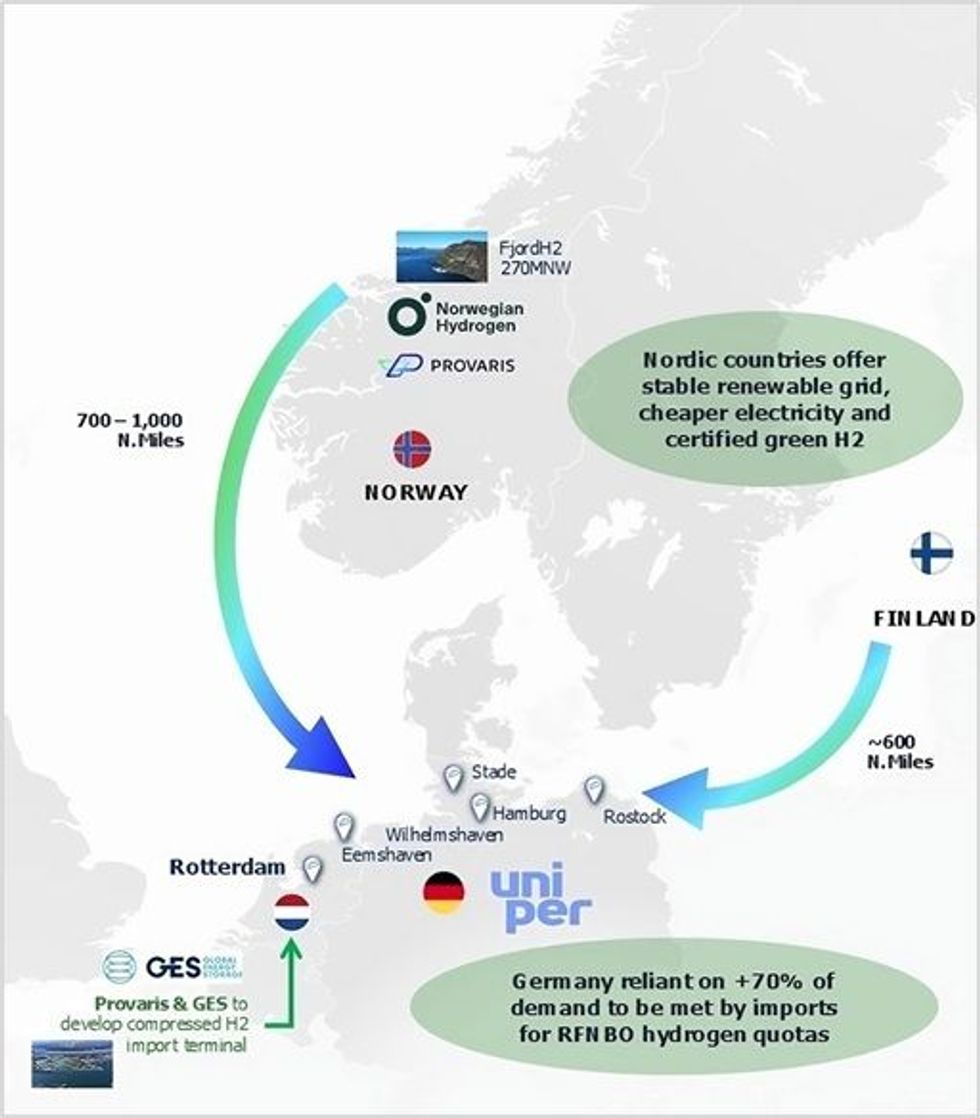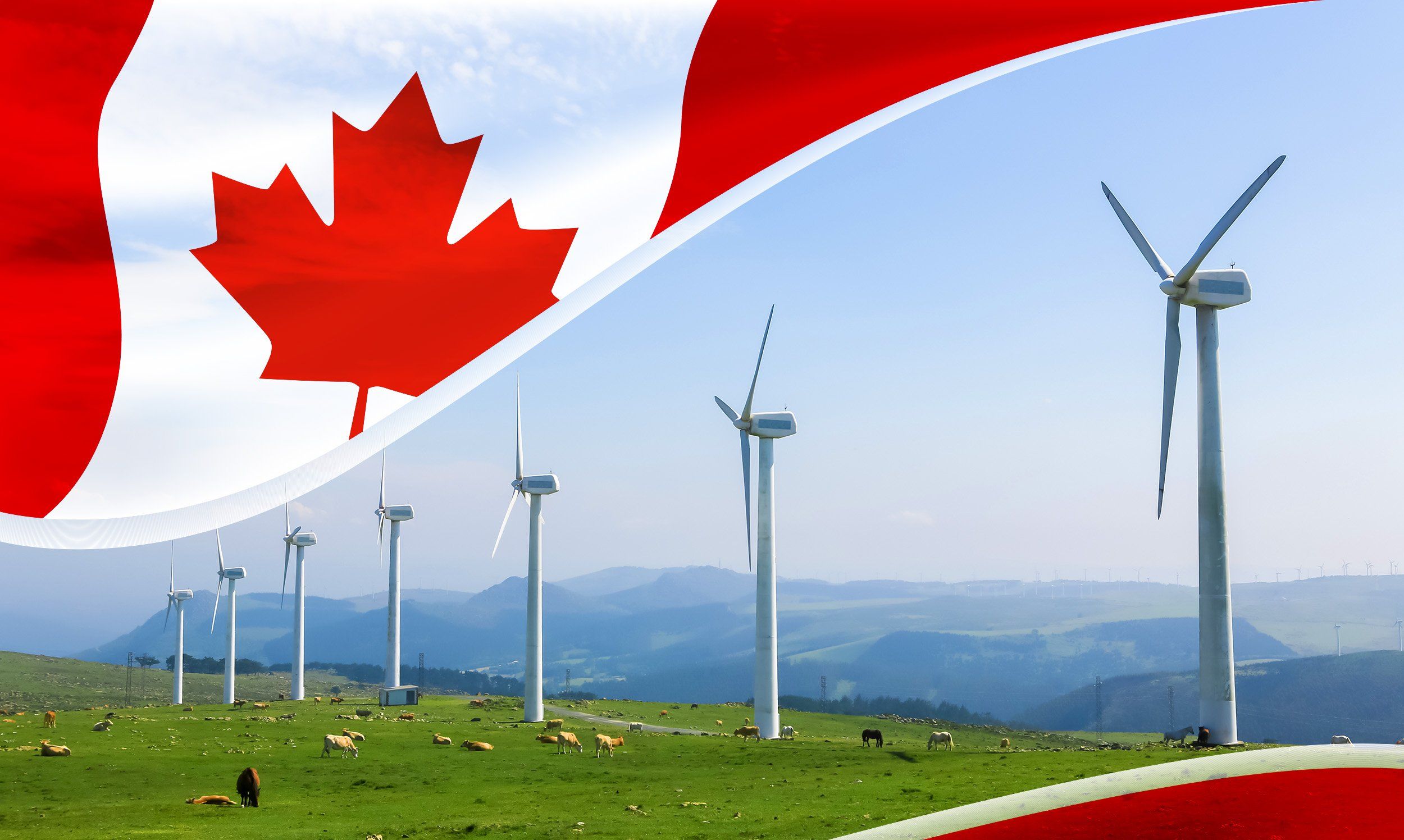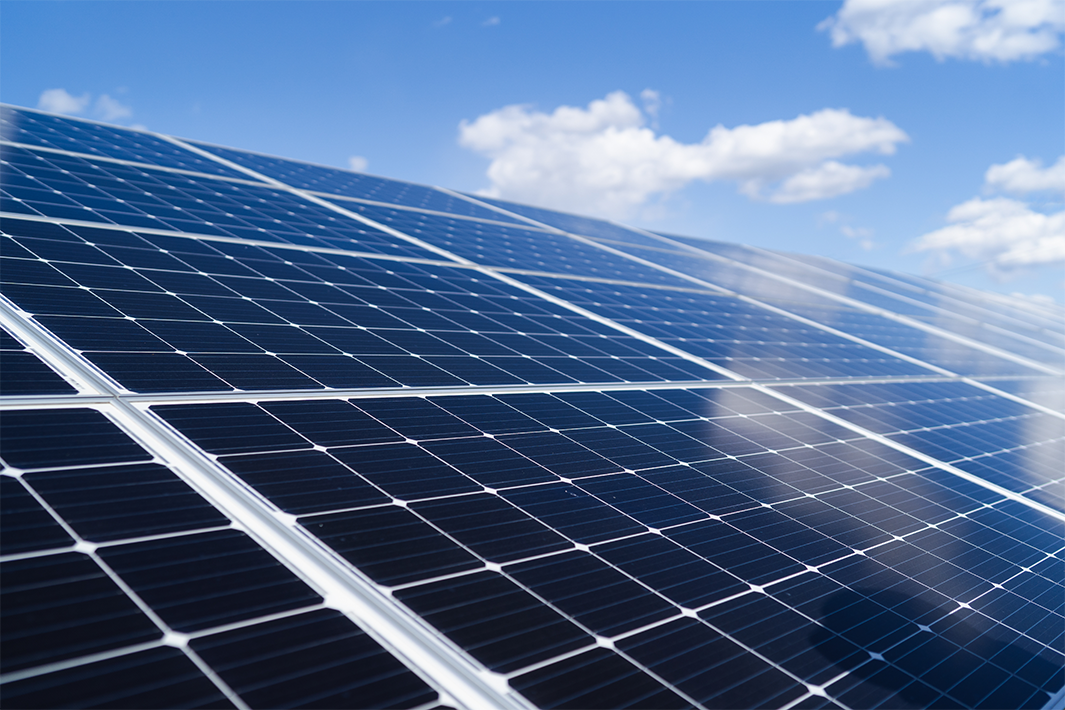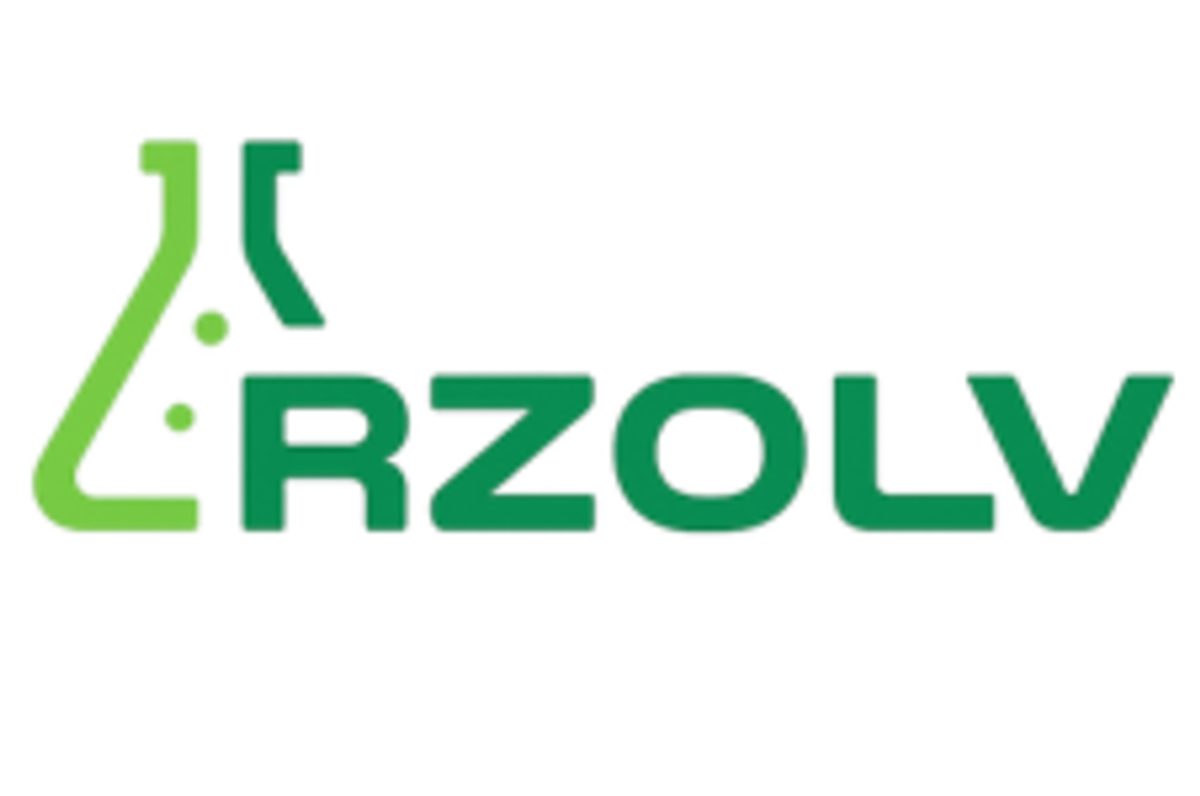
- WORLD EDITIONAustraliaNorth AmericaWorld
January 05, 2025
Provaris Energy Ltd (Provaris; ASX:PV1) is pleased to advise the collaboration with Uniper Global Commodities SE (Uniper) and Norwegian Hydrogen AS has advanced to the execution of a conditional Term Sheet for the supply, transport and offtake of RFNBO compliant hydrogen. The Term Sheet provides the basis of negotiating a binding Hydrogen Sale and Purchase Agreement (Hydrogen SPA) which is targeted for June 2025.
Highlights:
- Provaris, Uniper and Norwegian Hydrogen sign a conditional Term Sheet for hydrogen supply, transport and offtake.
- Agreed Key Terms and Conditions to form the basis of negotiating a binding Hydrogen SPA, targeted for June 2025.
- Annual volume of 42,500 tonnes per year of RFNBO1-certified hydrogen to be delivered as gaseous compressed hydrogen using Provaris’ H2Neo carriers.
- Uniper Global Commodities SE will be the buyer of hydrogen at an agreed fixed price and responsible for the receiving terminal in North-Western Europe for delivery.
- Commencement of cargos deliveries is targeted for early-2029, for a minimum term of 10-years, making it Europe’s first regional hydrogen marine transport project at scale.
- Term Sheet for supply of hydrogen using Provaris carriers demonstrates Uniper’s commitment to a portfolio of supply sources, including a focus on supply from the Nordic Region.
- Provaris’ approach to hydrogen supply and transport provides a standardized, efficient and flexible approach to scaling hydrogen supply, which is exactly what Germany and Europe needs to meet its 2030 decarbonisation targets.
Execution of the Term Sheet achieves a significant milestone under the Memorandum of Understanding (MOU), announced in August 2024, and facilitates ongoing co-operation on developing hydrogen supply chains based on Provaris’ compressed hydrogen carriers from Norway and other potential Nordic sites to import locations in North- Western Europe.
Provaris’ Managing Director and CEO, Martin Carolan, stated: “We are delighted to see the collaboration has progressed to a Term Sheet for hydrogen supply and offtake. This represents a key milestone for Provaris and validation towards developing regional bulk-scale hydrogen supply chains within Europe using Provaris’ H2Neo compressed hydrogen carriers.”
Norwegian Hydrogen CEO, Jens Berge, added: “We’re very excited about this tri-party collaboration, and it’s rewarding for all three parties to see our efforts progress into increasingly concrete and advanced stages”
Uniper Global Commodities SE, Senior Vice President - New Energies Origination, Benedikt Messner, commented: “We think that the innovative transport concept by Provaris might be a solution to connect commercially interesting hydrogen supply locations with our core markets and look forward to the continuation of our collaboration.”
Compression Replaces Complexity with Simplicity to Lower the Delivered Cost of Hydrogen
Analysis by the collaboration partners has highlighted that when customer demand is for hydrogen (not a derivative), regionally sourced hydrogen from the Nordics, transported through Provaris’ compressed hydrogen carriers, provides an efficient and cost-effective supply chain, limiting the losses in the entire chain from electrolyzer through to the distribution pipeline in Europe.
Lowering the energy consumption over the entire supply chain results in more renewable energy available for hydrogen production and higher volumes delivered.
Hydrogen Supply Chain Development
Provaris and Norwegian Hydrogen are collaborating on the development of the supply of RFNBO compliant hydrogen, which will be stored and transported using Provaris’ H2Neo carriers. Work is underway to outline the preferred sites in the Nordics, including Norway and Finland. Sites with a detailed feasibility include the FjordH2 Project located in the Alesund region, Norway.
Based on the proposed hydrogen volumes and shipping distance, the supply chain’s storage and shipping infrastructure using Provaris’ proprietary shipping solutions will include one (1) H2Leo barge storage at the production site, with a capacity of 450 tonnes of compressed hydrogen at 250 barg pressure, and two (2) H2Neo hydrogen carriers with an individual storage capacity of 450 tonnes of compressed hydrogen at 250 barg pressure. Provaris continues to progress both the H2Neo and H2Leo towards Final Class approvals in the first half of 2025.
Uniper will be responsible for the selection and development of the import terminal and are working with Provaris to outline the capital and operating equipment to discharge the H2Neo carriers, which includes an assessment of optimal storage and connection to the European Hydrogen Backbone for distribution to industrial sectors. Simplicity of port infrastructure provides for the flexibility of nominating one or more entry ports.
The Term Sheet remains conditional upon, among others, the negotiation and execution of a fully termed Hydrogen SPA and obtaining all necessary approvals.
Illustration of the Regional Supply locations from the Nordic Region into North-West European ports with hydrogen import development plans linked to the future development of Germany’s core hydrogen network

Click here for the full ASX Release
This article includes content from Provaris Energy, licensed for the purpose of publishing on Investing News Australia. This article does not constitute financial product advice. It is your responsibility to perform proper due diligence before acting upon any information provided here. Please refer to our full disclaimer here.
PV1:AU

Sign up to get your FREE
Provaris Energy Investor Kit
and hear about exciting investment opportunities.
- Corporate info
- Insights
- Growth strategies
- Upcoming projects
GET YOUR FREE INVESTOR KIT
The Conversation (0)
25 May
Provaris Energy
Enabling the scale-up of clean energy supply chains through innovative hydrogen and CO2 storage and transport solutions.
Enabling the scale-up of clean energy supply chains through innovative hydrogen and CO2 storage and transport solutions. Keep Reading...
17 December
Placement Advances H2 and CO2 Tank Development
Provaris Energy (PV1:AU) has announced Placement Advances H2 and CO2 Tank DevelopmentDownload the PDF here. Keep Reading...
15 December
Trading Halt
Provaris Energy (PV1:AU) has announced Trading HaltDownload the PDF here. Keep Reading...
26 November
2025 AGM - Chairman's Address
Provaris Energy (PV1:AU) has announced 2025 AGM - Chairman's AddressDownload the PDF here. Keep Reading...
31 October
September 2025 Quarterly Activities & Appendix 4C Cashflow
Provaris Energy (PV1:AU) has announced September 2025 Quarterly Activities & Appendix 4C CashflowDownload the PDF here. Keep Reading...
15 October
Norway Innovation Centre for Robotics and Prototype Tank
Provaris Energy (PV1:AU) has announced Norway Innovation Centre for Robotics and Prototype TankDownload the PDF here. Keep Reading...
19 December
5 Best-performing Canadian Cleantech Stocks of 2025
As the world races to meet rising power demand driven by artificial intelligence (AI) and advanced computing, cleantech is stepping into a new era of opportunity. Developing and scaling innovative energy technologies has never been more accessible or cost-efficient, thanks to breakthroughs in... Keep Reading...
17 December
Cleantech Market Forecast: Top Trends for Cleantech in 2026
After a year marked by policy changes and trade uncertainty, experts are calling for cleantech investment to be dominated by artificial intelligence (AI) energy demand in the first quarter of 2026.The COP30 conference, held in Belém, Brazil, this past November, was marked by cautious optimism... Keep Reading...
16 December
Disrupting the Gold Standard: Eyeing Cyanide-free Alternatives in Resource Extraction
In a $2 billion cyanide market that underpins global gold extraction, a seismic shift is underway as environmental concerns and evolving investment standards push the industry towards safer, more sustainable alternatives. For over a century, cyanide has been the gold standard in mining, driven... Keep Reading...
15 December
Silica Investing: How Processing Bottlenecks Create Breakthrough Opportunities
As one of its most abundant minerals, the world has no shortage of silica. The challenge — and more importantly, the value — lies in making it pure enough for the technologies that will define the global energy transition.Innovations in cleaner and more efficient high-purity (HPQ) silica... Keep Reading...
11 December
RZOLV Technologies Appoints Mary Ellen Thorburn to the Board of Directors; Announces the Retirement of Darryl Yea
Rzolv Technologies Inc. (TSXV: RZL) (the "Company" or "RZOLV") is pleased to announce the appointment of Ms. Mary Ellen Thorburn to the Company's Board of Directors, effective December 15, 2025."On behalf of the Board of Directors, I am pleased to welcome Mary Ellen to the RZOLV team," said... Keep Reading...
09 December
Investing Insight: Why CNG is the Next Scalable Step in Cleaner Heavy-duty Transport
As global decarbonization ambitions collide with real-world economics, compressed natural gas (CNG) is quietly reasserting itself as a pragmatic, low-emission solution for heavy-duty trucking. Amid rising diesel costs, tightening emissions rules and infrastructure and economic constraints that... Keep Reading...
Latest News

Sign up to get your FREE
Provaris Energy Investor Kit
and hear about exciting investment opportunities.
- Corporate info
- Insights
- Growth strategies
- Upcoming projects
GET YOUR FREE INVESTOR KIT
Interactive Chart
Latest Press Releases
Related News
TOP STOCKS
American Battery4.030.24
Aion Therapeutic0.10-0.01
Cybin Corp2.140.00







